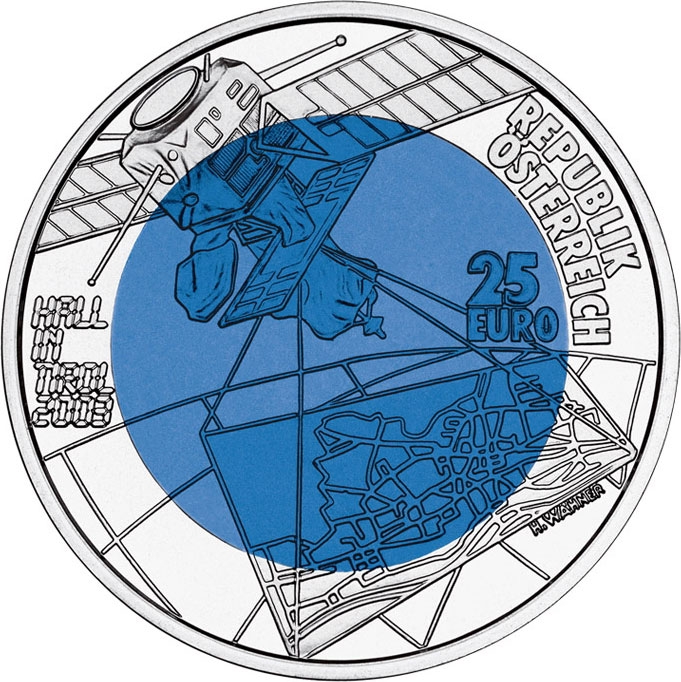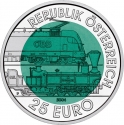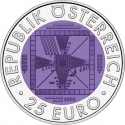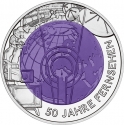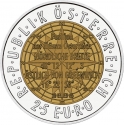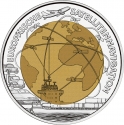You are about to finish your registration. Please check your mailbox (including spam folder). There should be a letter with a confirmation link. Check setting to make sure that your e-mail address is correct.
Send letter againDescription
The first coin in the Austrian Mint’s innovative Silver Niobium 25 Euro series, 700 Years of Hall in Tyrol ingeniously introduces the two elements that combine to set this unique series apart from the rest.
The coin commemorates the charter granted over 700 years ago to the town of Hall in the Tyrol, where the first large silver coin, the Guldiner, was struck in 1486.
Hall in Tyrol is a town in the Innsbruck-Land district of Tyrol, Austria. Located at an altitude of 574 m, about 5 km (3 mi) east of the state's capital Innsbruck in the Inn valley, it has a population of about 13,000 (Jan 2013). In the 15th and 16th century, Hall was one of the most important towns in the Habsburg Empire. This period saw the construction of many of the churches, monasteries and convents that still shape the appearance of the town. Today Hall has the biggest intact old town in the western part of Austria.
The coin contains 9 grammes of 900 Fine silver in its outer ring and 6.5 grammes of 998 pure niobium. Each coin is encapsulated, boxed and comes complete with a numbered certificate guaranteeing its authenticity.
Obverse

|
A relatively new find only discovered in 1801, niobium plays an important role in the space industry, something acknowledged on the coin’s obverse, where a satellite maps the town of Hall from space. REPUBLIK |
|---|---|
Reverse

|
Depicts the Guldiner silver coin of 1486, but with a difference. The design is negative and represents a coining die, a reference to Hall’s history as an important centre for minting coins. This is the first time a coin die has been reproduced on a coin, adding to the unique character of this most unusual issue. · 700 JAHRE · |
| Edge |
25 Euro
Silver Niobium Coin
Hall in Tirol
Subscribe series
KM# 3101
Silver Niobium Coin
Hall in Tirol
Characteristics
| Type | Commemorative Issue (Non-circulating) |
| Material | Bi-Metallic |
| Ring | Silver |
| Center | Niobium |
| Weight | 17.15 g |
| Diameter | 34 mm |
| Thickness | - |
| Shape |
|
| Alignment | Medal |
| Mint |
Austrian Mint
|
